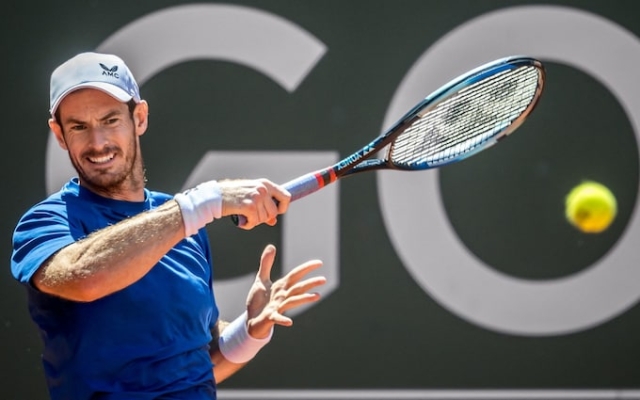 Andy Murray was a serious doubt at Roland Garros after suffering an ankle injury in March. Photo: AFP/Fabrice Coffrini
Andy Murray was a serious doubt at Roland Garros after suffering an ankle injury in March. Photo: AFP/Fabrice Coffrini
Andy Murray arrived at Roland Garros in questionable form after two straight-set defeats to players outside the world's top 80. But he was in a surprisingly optimistic mood, perhaps because he was afraid of missing out on the tournament altogether.
When Murray's ankle rolled over in Miami, tearing two ligaments on the outside of his left foot, the initial prognosis was for 10 to 12 weeks, which could have jeopardized his participation at Wimbledon, not to mention Roland Garros.
But Murray, 37, opted for a hands-off approach — strengthening and rehabilitation — before surgery, and the process went so well so smoothly that three weeks ago he almost declared himself ready to travel to Rome.
“Initially it looked pretty unlikely,” Murray said Friday. “Injuries are always difficult because you never know how well they will heal, but it seemed like 10-12 weeks and so I probably wouldn't have been able to play.
“But I worked really hard every day with my team and physio, there were no breaks or holidays. This surprised me, because I could easily feel sorry for myself, take a break and not go to rehab. I am proud of this. I worked really hard and that's one of the reasons why I was able to come back a little earlier than expected.»
One of the ways Murray kept his spirits up was by tinkering with his strings and body rackets. Before catching his plane home from Miami, he limped to a sports store and selected at least 10 different models, along with a swing weight trainer and a roll of lead tape for fine tuning.
«I've been playing with the same racquet for 20 years and things have changed in that time,» he said this week. The experiment was clearly enjoyable. Dan Evans said he and Murray discussed these details during training at the National Tennis Center in Roehampton, and any problems adapting to the new Yonex Ezone 100 «will not be due to lack of testing, that's for sure.» < /p>
As Murray explained on Friday, «I don't want to end my career thinking, 'Should I have tried it and see if it could potentially help me?' After rehab, I found a racquet that I really liked.”
He also made it clear that any violation of the previous racketeering deal with Head was not on his part.
Stan Wawrinka and Murray before the semi-finals of the 2017 French Open. Photo: AP/Michelle Euler
What about the draw that led to a meeting with 2015 champion Stan Wawrinka, one of the few men at the French Open who, at 39, is even older than Murray? Surprisingly, Sunday's match will be the third consecutive match Murray will play against Wawrinka at Roland Garros.
The first in this series was the 2017 semi-final, which left both men with chronic injuries. The second was a dismal first round in 2019, when Murray still hoped, for no good reason other than sheer bloodlust, that his damaged hip would be able to handle professional tennis. And now this one, which, with luck, should provide a happy occasion and a fitting send-off.
“The first time I played against him was when I was 18, in the Davis Cup,” Murray said. “And then competed against him in the biggest tournaments and big matches over the years. It's incredible that at 39 years old he is still performing at the highest level.
“It’s great that we have the opportunity to play against each other. It must be a brilliant atmosphere. I think it's a good match for both of us. Obviously he's had a tremendous career and it's great to play against him in another Grand Slam.”
It was a warm endorsement, but Murray is still haunted by the aftermath of that 2017 semi-final. He lost in five tough sets and was never the same player again. “That was [the last straw for my hip],” he said. “I remember that before the quarterfinal match against Kei Nishikori, something was wrong. I had problems with my hip for a very long time, and if you look at some of my results in the year leading up to this, I lost several matches, ranging from two sets to one.
“Like the longer the matches went on , I had problems with moving and getting there. I remember during that match, in the fifth set, I felt like I couldn’t move. That night I couldn't sleep, my hip hurt a lot.
“I remember waking up at night and lying on the sofa in severe pain. I never recovered. After that match, I couldn't properly stretch my leg behind my back. It was a shame.»
























































Свежие комментарии